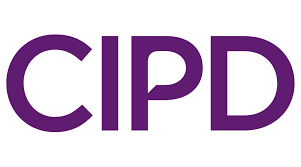4 key strategies to manage business growth

Rapid business growth is incredibly exciting but there are some pitfalls, too. In fact, when poorly managed, rapid growth can actually damage your business. That’s no reason to shy away from growth, but it is important to understand how to best manage it so that you can keep customer satisfaction high as your company expands. Let’s take a look at four key strategies to employ.
1) Hire the Right Team
The right team will make all the difference to your business growth. Focus on hiring employees who demonstrate a great attitude. You can train an employee up, but it’s very difficult to change a negative mindset. Of course, the right skills are important but in order to keep turnover rate low and morale high, you need to make sure that new hires fit in well with your company culture. Research by the BDC Network found that a positive company culture can increase operating income by 19% and earnings growth by 28%.
2) Stay on Top of Your Finances
When your profits and revenue are rising, it’s tempting to sit back, relax and let your finances take care of themselves, but that would be a big mistake. No matter how well your company is faring, it’s important to create a budget and review it regularly. In fact, the faster your business is growing, the more attention your finances need.
Growth, revenue and cash flow changes mean that you will have to implement changes to your current system of financial management. Growth often comes with big costs, too, such as equipment repairs and new hires.
You may find yourself in need of financial guidance as your business expands. The time for DIY money management has well and truly passed. Now that your needs are more complex, it may be time to hire a virtual CFO so that you will have access to top-level financial advice without taking on the cost and commitment of an in-house hire.
3) Utilise Working Capital
Cash flow management is one of the biggest challenges of business growth. Often, a significant amount of spending is involved in preparation for growth and you may find your reserves running low, even as your profits and revenue soar.
A working capital loan can help enormously with funding a high volume of orders, securing new inventory, purchasing new equipment or hiring new team members. There are many different options available, so it’s best to speak to your accountant about the right one for your business.
4) Focus on Your USP
As you grow, it’s important that you don’t lose sight of what makes your business unique. Your USP is what will make you stand out from the crowd and continue to attract success. Continue speaking directly to the audience that has gotten you this far and look for new and innovative ways to meet their needs.
Data and analytics are enormously helpful with this. AI tools can provide you with valuable feedback to show you what you’re doing well and which activities generate the most profit. This data can then inform your next steps. Keep an eye on this data, too, as new patterns may be revealed as your business evolves.
Business growth puts significant demands on business owners, but by hiring the right team, keeping a handle on your finances, utilising working capital and staying focused on your USP, it can be an amazing and exciting process that leads you towards success.
Call ADM Accountancy for expert advice with your business accounting on 01242 679767.
More from our blog...

















